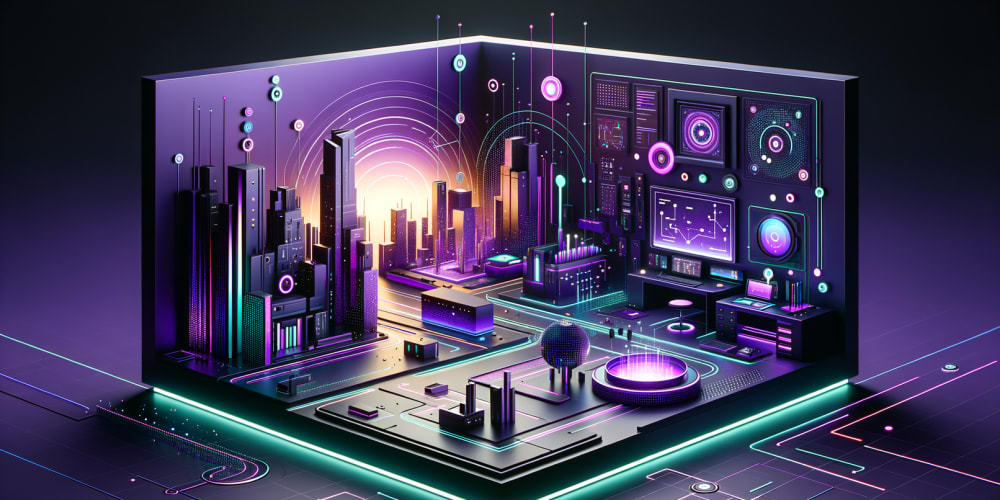<!DOCTYPE html>
New Adventures in Open Source Development
<br>
body {<br>
font-family: sans-serif;<br>
margin: 20px;<br>
}</p>
<div class="highlight"><pre class="highlight plaintext"><code>h1, h2, h3 {
text-align: center;
}
img {
display: block;
margin: 20px auto;
max-width: 80%;
}
code {
background-color: #f5f5f5;
padding: 5px;
border-radius: 3px;
font-family: monospace;
}
pre {
background-color: #f5f5f5;
padding: 10px;
border-radius: 5px;
overflow-x: auto;
}
</code></pre></div>
<p>
New Adventures in Open Source Development
Introduction
Open source development has revolutionized software creation, fostering collaboration, innovation, and accessibility. From operating systems like Linux to web frameworks like React, open source projects have become integral to our digital world. But the landscape of open source is constantly evolving, bringing new tools, techniques, and opportunities for developers. This article dives into some exciting frontiers in open source development, exploring how they empower developers and reshape the future of software.
The Democratization of Development
One of the most significant trends in open source is its increasing accessibility. Platforms like GitHub and GitLab have made it easier than ever to contribute to projects, regardless of experience level. This democratization of development has fostered a diverse and vibrant open source community, with contributions coming from individuals, students, hobbyists, and established companies alike.

This accessibility has also led to a rise in "citizen developers," individuals with limited programming experience who contribute to open source projects in various ways. This can range from reporting bugs and suggesting features to writing documentation and translating interfaces. Citizen development not only benefits the projects themselves but also empowers individuals to contribute to the software they use.
Advanced Development Tools and Techniques
Beyond accessibility, open source development is pushing the boundaries of technology. New tools and techniques are emerging that streamline development workflows, enhance collaboration, and improve code quality.
- Cloud-Native Development
Cloud-native development has become a cornerstone of modern open source projects. This approach embraces cloud-based infrastructure and technologies to build scalable, resilient, and distributed applications. Containerization platforms like Docker and Kubernetes have become essential for deploying and managing open source projects in the cloud.

Microservices architectures are gaining traction in open source, allowing developers to break down complex applications into smaller, independent services. This modular approach facilitates independent development, deployment, and scaling of individual services, resulting in more agile and maintainable projects.
AI and ML are increasingly influencing open source development, leading to intelligent tools that automate tasks, improve code quality, and enhance developer productivity. For example, AI-powered code completion tools can suggest code snippets, while ML-based testing frameworks can automatically generate test cases.
Open Source for Social Impact
Open source development is not just about building software; it's about addressing real-world problems and improving lives. Projects like OpenStreetMap, Wikipedia, and Khan Academy demonstrate the power of open source to create accessible resources, foster education, and promote social good.
The increasing adoption of open source technologies in fields like healthcare, education, and environmental sustainability is paving the way for innovative solutions to critical challenges. Open source platforms are enabling the development of low-cost medical devices, accessible educational resources, and sustainable energy solutions, making a real difference in the world.
Building Your Open Source Journey
If you're eager to embark on your own open source adventure, here's a step-by-step guide:
Choose a project that aligns with your interests and skills. Browse platforms like GitHub and GitLab to discover projects that resonate with you. Consider areas like web development, data science, game development, or hardware hacking.
Don't feel overwhelmed by the prospect of tackling complex projects. Begin by contributing to smaller, well-maintained projects. Look for opportunities to fix bugs, improve documentation, or even translate interfaces. These small contributions can make a big difference.
Familiarize yourself with Git, the version control system used for most open source projects. Learn how to clone repositories, create branches, make commits, and push your changes. Platforms like GitHub and GitLab offer excellent tutorials for beginners.
Follow the project's contribution guidelines and coding style. Write clear and concise commit messages. Engage with the community by asking questions, seeking feedback, and collaborating with other developers.
Showcase your contributions on your GitHub profile or other online platforms. This will demonstrate your skills and experience to potential employers or collaborators.
Examples of Innovative Open Source Projects
- Rust: A systems programming language known for its speed, reliability, and memory safety. Rust is being adopted by major companies like Amazon, Google, and Microsoft.
- Next.js: A popular framework for building server-side rendered React applications, offering features like automatic code splitting, image optimization, and serverless functions.
- TensorFlow: An open-source machine learning library used by developers and researchers worldwide for building and deploying AI models.
- OpenStreetMap: A collaborative project for creating and maintaining a free and open map of the world. OpenStreetMap data is used by a wide range of applications and services.
-
Arduino: An open-source hardware platform that enables rapid prototyping and development of embedded systems.
Conclusion
Open source development continues to evolve at a rapid pace, driven by innovation, collaboration, and a growing community of developers. From cloud-native architectures to AI-powered tools, new frontiers are emerging that empower developers to build more sophisticated, scalable, and impactful applications. Embracing the principles of open source, contributing to projects, and staying informed about emerging trends can open doors to exciting career opportunities and the potential to make a positive impact on the world.






















